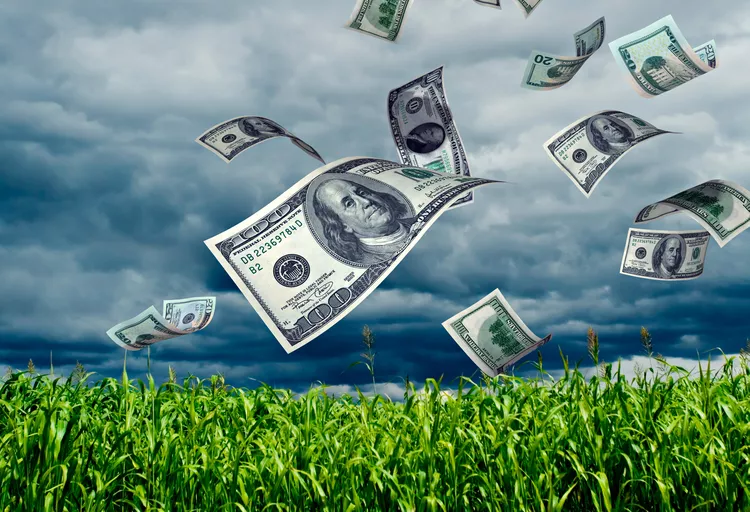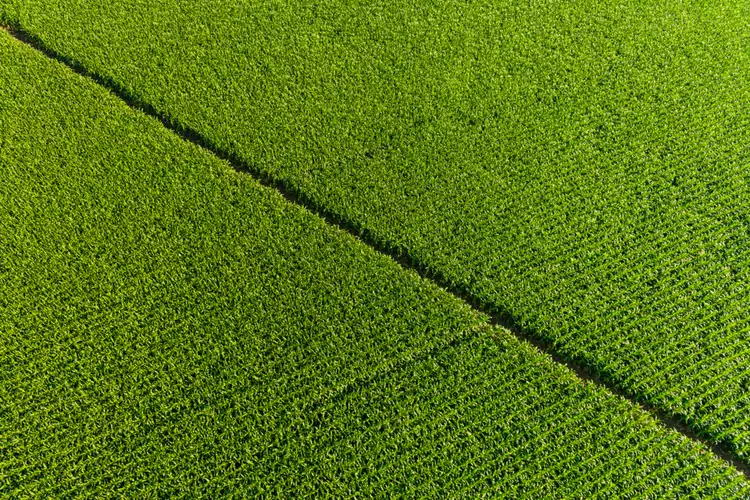Factors influencing farmland prices
Successful Farming
By: Cassidy Walter
Experts say farmland values are likely headed for a plateau but plenty of wildcards are still in play.

PHOTO: KATIV, GETTY IMAGES
Headlines boasting record-breaking farmland sales and surging values gave voice to the excitement in the market last year while land prices climbed. As 2023 marches on, the experts say some of that excitement may be waning and to expect strong, but flatter prices going forward.
“We’ll probably see some high reports of really high-quality farms that are well-located…and we might see some lower-quality farms start to back up a little bit in prices as we head toward the end of the year,” says Tim Koch, executive vice president of business development for Farm Credit Services of America. “But as a whole, I would anticipate that we’ll see a flattening of prices throughout the remainder of the year.”
Jackson Takach, chief economist at Farmer Mac, put it this way: “You’re still seeing positive gains in land values, quarter over quarter, but at a much-reduced rate compared to ’21 or ’22, when they were in the double digits of annual and quarterly growth. Today they’re in the 1% to 3% range.”
Loans on the Rise
Data available at the time of this writing echoes Koch’s and Takach’s analyses. Farmers National Co.’s latest Regional Land Values Report looked at farmland sales data for high-quality farmland across 18 states. All saw the average sale price per acre increase between June 2021 and June 2022 and from June 2022 to June 2023. However, the rate of growth between 2021 and 2022 was higher for most states than in the past year.
Iowa saw the largest difference between 2022’s increase and 2023’s increase. High-quality farmland averaged $11,900 an acre in 2021 and jumped to $15,000 in 2022. The average increased by only $400 from 2022 to 2023.
For some other states, the difference was much smaller. The Arkansas average increased $400 per acre between 2021 and 2022 and $300 from 2022 to 2023.
Average value increases for Kansas and Oklahoma were equal from 2021 to 2022 and 2022 to 2023. Texas was the only state analyzed that saw a larger increase between 2022 and 2023 than from 2021 to 2022.
“These operators have enjoyed a period of high liquidity over the past five years but are now moving into a period of increasing debt service and borrowing,” says Paul Schadegg, senior vice president of real estate operations for Farmers National Co. “This will most likely result in less available cash reserve to deploy for capital expenditures and land purchases.
“Looking ahead to the second half of 2023, we anticipate strong competition for high-quality land offered for sale,” he adds. “The overall U.S. agriculture economy is healthy, with Midwestern banks reporting increased operational lending but strong loan performance and projections for a profitable 2023 growing season. Our pipeline for scheduled fall sales is beginning to fill at a typical pace with buyers and sellers of farmland requesting information on upcoming sales.”
Holding Steady
The Realtors Land Institute Iowa Chapter released its biannual Land Trends and Values Survey in late March. The survey found that on average, farmland values in Iowa improved by 0.8% from September 2022 to March 2023.
In contrast, between March 2022 and September 2022, values increased 2.8% on average. From September 2021 to March 2022, values increased 14.1%. March 2021 to September 2021 saw an 18.8% jump.
David Whitaker, president of Realtors Land Institute Iowa Chapter, says when looking at the numbers from the past several surveys, a good way to describe the most recent one is “steady.” He also expects steadiness over the next six months.
“I think there’s enough money out there that we will hold steady,” he says. “I think farmland is the asset that everybody wants and wants to keep and is willing to pay for.”

Variables and Volatility
While there appears to be agreement that the market is staying strong but cooling down, there is a nonnegotiable caveat that several variables could send land values in an unexpected direction.
Commodity Prices
Experts say there is a strong connection between commodity prices and farm revenue and farmland values. Higher prices equate to farmers having more cash on hand and more interest in investing in their operations. With lower prices, expect the inverse.
“It’s just like getting a raise at your job,” says Whitaker. “If you get a raise, you feel like you have jingle in your pocket. Guess what? You want to spend money. Let’s go on vacation. Let’s buy more stuff, new tractors, farmland, etc.”
Last year, peak corn prices were approaching $8.50 a bushel and soybeans neared $18 a bushel. Since then prices have slowly declined, yet the market remains volatile and vulnerable to supply scares.
When the June 30 USDA Acreage report pegged 2023 soybean acres 4 billion below the March estimate, November 2023 soybeans closed roughly 75¢ higher than they started the day.
After Russia ended its participation in the Black Sea Grain Initiative on July 17, September 2023 Chicago wheat climbed roughly 75¢ in the days that followed. December corn gained nearly 50¢.
So far, 2023 price spikes are a far cry from 2022 highs, but corn and soybeans remain elevated in comparison to most of the last decade.
“There’s still a lot of profits that can be inked in ’23, and combined with healthy land values and solid working capital positions, that could give farmers options in ’24, even though the farm economy is starting to contract,” Takach says.
Takach also notes lower commodity prices may lead to more farm sales.
“If we have a good crop and if commodity prices continue to soften…’24 could be the year we see more supply of farmland come onto the marketplace, and then that would create a downward pressure on prices,” he says. “At the same time, you’d probably see a little bit less demand for the asset class because lower commodity prices, lower farm income, lower revenue generated by the asset — combined with a higher interest rate environment — create downward pressure on asset values.”
Inflation
Steve Bruere, president of Peoples Co., says rising inflation will drive land values up and it is too soon to tell if this current period of high inflation is truly over.
“It’s not a foregone conclusion in my mind that land values have peaked,” says Bruere. “I think that the contrarian view would be that inflation is more persistent than anybody thinks, and you could have another leg up on the land market.”
However, as of this writing, the Consumer Price Index has declined every month since June 2022 and was at 3% in July, just one percentage point off the U.S. Federal Reserve’s stated goal.
Interest Rates
Higher interest rates are starting to loom larger for farmers as cash reserves start to run low, says Schadegg.
“With that, many purchases made may be leveraged,” he says. “When they’re leveraged, which the Midwestern banks are telling us they’re seeing an increase in loan activity, then we go back to the profitability question…. If you’re leveraging the land, you’ve just added an expense of interest…that is definitely going to be an obstacle for any individual or group that is purchasing land moving forward.”
Outside Investors
Despite all the talk of investors buying farmland, non-farmer investors have little impact on farmland prices.
Todd Kuethe, Schrader endowed chair in farmland economics at Purdue University, says investors tend to set a price floor as they are looking for deals while farmers are deciding the ceiling.
“As you see farms lose liquidity, or if they’re concerned about rising input costs, or they’re excited to reinvest in machinery instead of into their land, that’s what really drives the dynamics of the prices more so than the outside investors,” he says.
Farmers National Co. notes in its latest report on land values that farm operators account for nearly 80% of the company’s sales.
In It for the Long Haul
In the big picture, farmland remains a good investment, says Koch.
“We talk about real estate values when they’re going up a lot,” he says. “We talk about real estate values when they’re going down. If you look at the overall trend in real estate values and you take out some of the peaks and the valleys, ag real estate has a really good track record of a consistent return.”
Whitaker says farmland is a unique asset because a farm typically changes hands only once every 60 years. Meaning the right buyer may jump at the opportunity to purchase the right land regardless of market forces.
“It’s not going to be for sale again until you die, so if you’re interested, you better fire,” he says.
To view the full article, click here.



